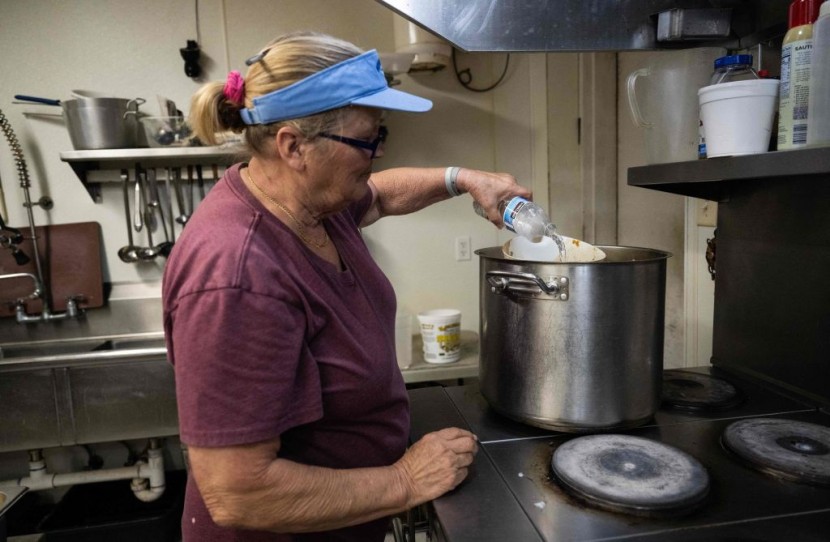There are still an estimated 500,000 children in the United States with blood lead levels that are considered high, and experts say lead in drinking water is an important source.
Decades after government officials banned lead in gasoline for new cars and stopped the sale of lead paint - huge steps toward eliminating significant sources of lead exposure to the public - this problem persists.
The government is now working to tighten a regulation that failed to stop previous drinking water disasters in towns like Flint, Michigan, and Newark, New Jersey, and further lower lead levels in drinking water, according to The Associated Press.

The EPA says it would recommend mandating utilities to aggressively replace hazardous lead pipes, albeit the specifics aren't made public.
The estimated 9.2 million lead pipes in the country, which connect water mains under the street to houses and businesses and are to blame for the majority of the lead that leaks into drinking water, have previously been advocated for elimination by President Joe Biden.
However, hiring professionals to dig up the pipes, lay new ones, and replace any damaged landscaping is expensive. Homeowners in many places are asked to pay to fix the pipe on their property.
Lead exposure affects children more than adults, and large levels have been shown to dramatically lower intellect, impair coordination, and interfere with a student's ability to concentrate and study. Changes in behavior are possible. There is no safe threshold of lead exposure for children, according to federal regulators, and even modest levels can lower IQ scores.
The new regulations will be implemented as the federal government intensifies its campaign against lead, making statements about the hazards of lead in aviation fuel and proposing harsher regulations for lead-based paint dust in older houses and daycare centers.
Some officials continue to pay greater attention to sources like paint dust, but after Flint, awareness of the threat in water increased.
Childhood blood lead levels in the US have been significantly decreased thanks to decades of study. However, a lot of children are still getting exposed to the dangerous metal, "and the expectation is that a fair amount of that is from lead in water," said Dr. Aaron Bernstein, a pediatrician from Boston who this year was appointed to run the environmental health programs at the Centers for Disease Control and Prevention.
Read also: Hundreds of Cancer Cases Reported at Montana Missile Sites, Air Force Finds Carcinogens
The Flint Crisis
According to experts, the Flint crisis had the most effect on public health professionals' perception of the hazard posed by lead in drinking water. Numerous children were exposed to excessive amounts of contaminants in drinking water, which led to an emergency, lawsuits, protracted national media coverage, and legislative action.
However, the initial breach in public confidence was caused by a lead issue in Washington, D.C., roughly ten years earlier.
According to the EPA rule, utilities had to test the tap water in residential buildings for lead and alert the public if the findings were excessively high. In Washington, that notification requirement ought to have taken effect in 2001, but the local utility withheld some findings from the EPA, giving the impression that the city was compliant when it was not.
A legal firm's inquiry revealed that the next year, after bragging that the utility "delivers safe drinking water that meets or surpasses EPA requirements," authorities sent a 12-page booklet, hiding notice of the issue at the bottom of page 3.
It wasn't until early 2004 that citizens of Washington, D.C., learned that a catastrophe had been developing for years through a news report.
Recently examined homes revealed lead levels in excess of the EPA's 15 parts per billion guideline in two-thirds of the cases. This includes 157 residences that had values at least 20 times higher than the cutoff and more than 2,000 with findings several times higher than 15 parts per billion.
She said that the CDC made matters worse when it released a report in March 2004 claiming that young children's blood lead levels were not significantly affected by the high levels of lead in Washington's drinking water.
The CDC came under fire for downplaying the issue. Later, agency officials said that misinterpretations were mostly to blame for the uproar.
Years later, however, a report from a House oversight committee would claim that the CDC omitted important information and utilized testing procedures on children that obscured the connection between blood lead levels and lead in drinking water. As a matter of fact, young D.C. During the drinking water crisis, the number of children significantly rose, according to later research by Virginia Tech's main expert Marc Edwards.
Then, when Washington, D.C., attempted to remove its lead pipes, it left the section of the pipe that ran beneath residents' houses in the ground, a move that might increase lead levels.
Related article: EPA's New PFAS Definition Could Exclude Forever Chemicals; Experts Fear Consequences
© 2025 HNGN, All rights reserved. Do not reproduce without permission.








